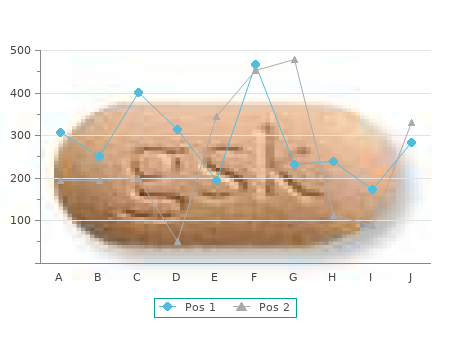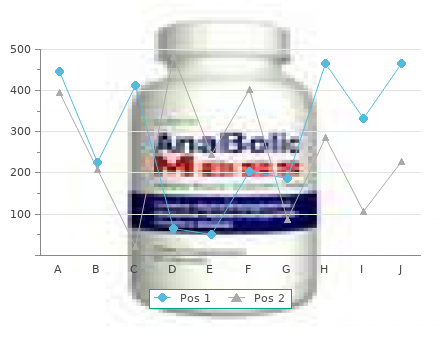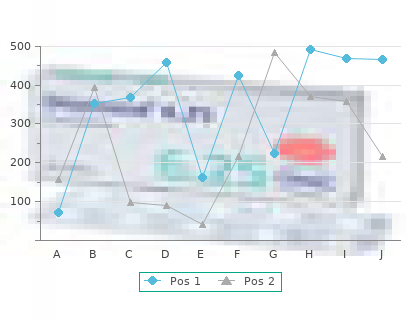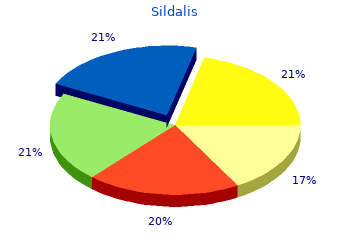Sildalis
By A. Jaroll. Milwaukee School of Engineering.
LNG-IUDs are becoming increasingly avail- should know sildalis 120 mg overnight delivery, however, that uterine fibroids need a able in resource-poor countries but you will regular follow-up by ultrasound to monitor growth probably have to look into private pharmacies to in order to remove them in due time when they find them. They are a bit expensive as well but they grow, before they are so big or numerous that only last for 5 years, decrease fibroid-associated dys- hysterectomy is an option. Intervals between ultra- menorrhea and are a good contraceptive as well. Postmenopausal have a higher failure rate and the rate of expulsion women who present with fibroids for the first time in women with uterine fibroids is higher compared should be examined again after a short period, e. The most frequent adverse effect of progestins, uterus. When you suspect a sarcoma, the patient however, is intermittent bleeding, which usually needs a hysterectomy (see Chapter 29). Normal contraceptive pills (COC) and the progesterone-only pill can reduce menorrhagia as well if you tell the patients to use them con- tinuously without a 7-day break for several strips in a row. This will reduce the number of periods and thus menorrhagia. If in your setting, only COC are available which contain iron tablets in the last blister row, tell the patient to start a new packet every time they come to the iron-containing pills. It is likely that the patients will experience a slight bleeding after a couple of months. Tell them to have a 7-day break once they start bleeding and then continue as before. For more options to treat menorrhagia, such as tranexamic acid or non-steroidal anti-inflammatory drugs, see Chapter 20 on the treatment of abnor- mal bleeding. The best candidates for medical treatment are women who are near the menopause or those with Figure 3 Pelvic anatomy for abdominal hysterectomy underlying medical conditions that forbid opera- and myomectomy tions. Those near menopause might have gone into menopause after 5 years of LNG-IUD or Implanon operation might be infection leading to sterility due and won’t need any further treatment by then. Make sure before you do surgery that the menorrhagia who don’t suffer from infertility or woman does not have cervical cancer, because the recurrent miscarriage (as these groups would profit surgery can become disastrous if she has! Pelvic anatomy for abdominal hysterectomy and myomectomy (Figure 3) Surgical treatment Important surrounding structures which are prone Indications for surgical treatment are the following: to injury and thus have to be identified are: • Menorrhagia unresponsive to medical treatment • Urinary bladder anteriorly. Supporting structures of the uterus are the follow- • Other symptoms interfering significantly with ing. They have to be identified cut and ligated daily activities. It is important to ovarian ligaments with ovarian branch of the thoroughly examine women with recurrent preg- uterine arteries. Adverse effects of your tissue: cardinal ligament, uterosacral ligaments. The most important ones are listed below: • Intraoperative blood loss with the need of blood Myomectomy transfusion. Myomectomy means the excision of fibroids from • Postoperative infection with consecutive tubal the myometrium without removing the uterus. This can be done by an abdominal incision usually • Thromboembolism. Both techniques will be des- • Uterine rupture in consecutive pregnancies. Depending on the site, number and Although this seems to be a rare event with a size of the fibroids, a vertical incision might be low incidence of around 0. If you feel, however, risk depends on: that a vertical incision is necessary due to size and N number, site and size of fibroids number of fibroids you should consider again N surgical technique whether you have the skills to do the operation as N perioperative infection these myomectomies need advanced experience N intraoperative opening of the uterine cavity and skills. N the capability of healing of the patient’s tissue Fibroids easily accessible to abdominal myo- N time elapsed since operation. Submucosal fibroids should have a significant intra- 20. These figures, however, are for mural part, as otherwise they can’t be located laparoscopic surgery, a method which will be abdominally during the operation. Furthermore, all patients in miscarriage (see Chapter 14). It is very important to consider that for patients All other patients becoming pregnant after myo- with infertility, recurrent miscarriage and desire for mectomy have to deliver in hospital, with theatre future pregnancies, a lot is at risk when undertaking facilities available 24 h, under any circumstances. If a the operation, since you are never sure if you can woman is not ready for this prior to surgery, myo- avoid a hysterectomy beforehand. Please be aware of the fact that the biggest cause of subfertility in low-resource Adverse events settings is tubal blockage and you should rule this Although the uterus is preserved, myomectomy is a out before surgery in patients who come with major abdominal operation and has as such adverse fibroids and a history of infertility (see Chapter 16). It is always wise to examine the patient yourself as The intraoperative placement of tourniquets is a surgeon, before the operation and again while she an effective method but you have to be sure of the is already anesthetized. This method should only be chosen and position of the fibroids and the uterine mobi- where misoprostol or bupivacaine/epinephrine are lity you will have to decide whether you can use a 14 not available. The technique for applying tourni- transverse or vertical incision of the abdominal wall quets for reduction of hemorrhage in myomec- for your operation. Here it is important to consider tomy is as follows: the aim of the operation: most patients for myo- mectomy undergo the operation in order to be- • Incise the anterior part of the peritoneum come pregnant and deliver safely.
Pooling: The practice of combing data from several studies to draw conclusions about treatment effects order sildalis 120mg with mastercard. Power: The probability that a trial will detect statistically significant differences among intervention effects. Studies with small sample sizes can frequently be underpowered to detect difference. Precision: The likelihood of random errors in the results of a study, meta-analysis, or measurement. The greater the precision, the less the random error. Confidence intervals around the estimate of effect are one way of expressing precision, with a narrower confidence interval meaning more precision. Prospective study: A study in which participants are identified according to current risk status or exposure and followed forward through time to observe outcome. Prevalence: How often or how frequently a disease or condition occurs in a group of people. Prevalence is calculated by dividing the number of people who have the disease or condition by the total number of people in the group. Targeted immune modulators 147 of 195 Final Update 3 Report Drug Effectiveness Review Project Probability: The likelihood (or chance) that an event will occur. In a clinical research study, it is the number of times a condition or event occurs in a study group divided by the number of people being studied. Publication bias: A bias caused by only a subset of the relevant data being available. The publication of research can depend on the nature and direction of the study results. Studies in which an intervention is not found to be effective are sometimes not published. Because of this, systematic reviews that fail to include unpublished studies may overestimate the true effect of an intervention. In addition, a published report might present a biased set of results (for example, only outcomes or subgroups for which a statistically significant difference was found). P value: The probability (ranging from zero to one) that the results observed in a study could have occurred by chance if the null hypothesis was true. Q-statistic: A measure of statistical heterogeneity of the estimates of effect from studies. It is calculated as the weighted sum of the squared difference of each estimate from the mean estimate. Random-effects model: A statistical model in which both within-study sampling error (variance) and between-studies variation are included in the assessment of the uncertainty (confidence interval) of the results of a meta-analysis. When there is heterogeneity among the results of the included studies beyond chance, random-effects models will give wider confidence intervals than fixed-effect models. Randomization: The process by which study participants are allocated to treatment groups in a trial. Adequate (that is, unbiased) methods of randomization include computer generated schedules and random-numbers tables. Randomized controlled trial: A trial in which two or more interventions are compared through random allocation of participants. Regression analysis: A statistical modeling technique used to estimate or predict the influence of one or more independent variables on a dependent variable, for example, the effect of age, sex, or confounding disease on the effectiveness of an intervention. Relative risk: The ratio of risks in two groups; same as a risk ratio. Retrospective study: A study in which the outcomes have occurred prior to study entry. Risk: A way of expressing the chance that something will happen. It is a measure of the association between exposure to something and what happens (the outcome). Risk is the same as probability, but it usually is used to describe the probability of an adverse event. It is the rate of events (such as breast cancer) in the total population of people who could have the event (such as women of a certain age). Risk difference: The difference in size of risk between two groups. In intervention studies, it is the ratio of the risk in the intervention group to the risk in the control group.


There is a palpable sense of hope among caregivers for infants (15%-20%) cheap sildalis 120mg line, but is also particularly common in the infant age group with leukemia that the emerging era of molecularly targeted therapy ( 50%). Turning this hope into reality will require close collaboration between molecular MLL-r results in the fusion of the N-terminus of the MLL gene with biologists and clinical trialists and among the international coopera- the C-terminus of a partner gene. Remarkably, 79 different MLL tive groups that have painstakingly established the infrastructure for partner genes have now been identified. In infant AML, 3 partner genes account for Characteristics of infant leukemia 66% of cases: AF9 (22%), AF10 (27%), and ELL (17%). The term “infant leukemia” generally refers to acute lymphoblastic leukemia (ALL) or acute myeloid leukemia (AML) diagnosed in a Various lines of evidence (eg, retrospective analyses of neonatal child before 1 year of age. The estimated incidence of acute samples and twin concordance studies) have shown that MLL leukemia in infants is 41 cases per million in the United States, rearrangements are acquired in hematopoietic precursors in utero, which equates to 160 cases of infant leukemia per year, with and this initiates rapid progression to full blown leukemia. Neuroblastoma and intriguing aspect of leukemia epidemiology is that MLL-r leuke- brain tumors occur with similar frequency as acute leukemia in the mias occur with high frequency in 2 very different clinical infant population. The incidence of ALL in infants is significantly situations: infants with de novo acute leukemia and patients with lower than in children aged 1 to 14 years old and approximately the treatment-related secondary myelodysplastic syndrome/AML after same as adolescents. In contrast, the incidence of AML in infants is exposure to potent DNA topoisomerase II (DNAt2) inhibitors (eg, approximately twice that of older children and adolescents. This has led to a hypothesis, with supporting evidence ingly, females have a higher risk of developing infant leukemia than from case-control studies10,11 and laboratory studies,12 that maternal 596 American Society of Hematology Table 1. Interfant COG JPLSG High-risk (MLL-r plus ) Age 6 mo and either PPR or WBC 300 000/ L Age 3 mo Age 6 mo or CNS leukemia Randomized postinduction intervention Protocol IB vs ADE/MAE FLT3 TKI None (single arm) HSCT All high risk, plus MRD end-consolidation None All high risk PPR indicates prednisone poor response; MRD, minimal residual disease; Protocol IB, cyclophosphamide, cytarabine, 6-mercaptopurine consolidation; ADE/MAE, cytarabine,daunorubicin,etoposide/mitoxantrone,cytarabine,etoposideconsolidation;andTKI,tyrosinekinaseinhibitor. Germline genetic susceptibility may also play a tence, etc) should be considered in designing chemotherapy treat- role, because candidate gene studies13,14 and genome-wide associa- ment protocols. It is perhaps not surprising, then, that infant tion studies15 have identified several single nucleotide polymor- leukemia protocols have encountered problems with excessive phisms that are correlated with risk of infant leukemia. In the Children’s Oncology Group (COG) infant ALL protocol P9407, for example, death from toxicity (primarily infec- In ALL, MLL-r is associated with CD10 negativity and coexpres- tious) within the first 90 days of enrollment occurred in 25% of the sion of one or more myeloid antigens, suggesting that these first 68 patients. After the study was amended to substitute leukemias arise from very immature lymphoid progenitors. In infant ALL, MLL-r patients (15%) dying from infections, although the only change to is clearly associated with poorer outcome. In the Children’s Cancer induction therapy was to substitute a single dose of PEG asparagi- Group protocol CCG-1953, the 5-year EFS for MLL-r infants was nase for native E coli asparaginase. Induction mortality on the Medical In Interfant-99, the 4-year EFS in MLL-r and MLL-g infants was Research Council (MRC) protocols AML10 and AML12 was 12% 37% and 74%, respectively. In a combined analysis of AML- infant leukemia also demonstrate an increased risk of late effects, BFM-98 and AML-BFM-2004, the 5-year EFS was 43% and 52% particularly in cases in which treatment included cranial radiation or for MLL-r and MLL-g infants, respectively (P. The most important of these leukemia are age and WBC at diagnosis, with the younger infants and those Given the similar prognosis and response to therapy of infants with with the higher WBC having poorer outcomes. Poor response to prednisone is significantly more common in Cases of AML in infants are relatively unlikely to harbor cytoge- infants than in older children with ALL, which has raised the netic or molecular abnormalities that confer unfavorable risk or question of whether the poor outcome for infants with leukemia may favorable risk. Therefore, infants usually fall into the intermediate be partly due to enhanced chemoresistance. Indeed, infant MLL-r cytogenetic/molecular risk group, for which current stratification ALL cells demonstrate enhanced in vitro resistance to corticoste- into favorable or unfavorable prognostic groups is dictated by roids and asparaginase in assays using short-term exposure of bulk end-induction minimal residual disease testing. Conversely, infant MLL-r AML cells do not demonstrate a more resistant phenotype. Currently, there are 3 major cooperative ALL is to achieve rapid complete remission with induction chemo- groups conducting specific clinical trials for infant ALL: Interfant therapy, but then relapse during the first year of therapy. This would (Interfant-06), COG (AALL0631), and JPLSG (MLL-10). All have suggest that the poor outcomes are due primarily to the emergence adopted an identical induction strategy based on Interfant-99. The low rates of second are using a prospective risk-stratified approach that incorporates remission reported by the Japanese Pediatric Leukemia Study MLL rearrangement status. Table 1 summarizes the key features of Group (JPLSG) in patients relapsing after treatment for infant ALL the 3 trials. There are several complex physiologic pro- with cyclophosphamide, cytarabine, and 6-mercaptopurine in MLL-r cesses that undergo rapid changes during the first year of life and infants. This stems from the hypothesis that these leukemias derive there are very limited data to guide how the distinct physiology of from an early hematopoietic precursor with myeloid differentiation Hematology 2013 597 potential and may therefore respond better to chemotherapy regi- MYC and other validated oncogenes. AALL0631 is testing whether the ence screen of 243 chromatin-modifying genes identified BRD4 to addition of a FLT3 tyrosine kinase inhibitor to postinduction be required for the maintenance of leukemia in an MLL-AF9 murine chemotherapy will enhance the effectiveness of chemotherapy model. The use of HSCT varies between the genes and demonstrated in vitro and in vivo antileukemic activity by groups on these trials, reflecting the controversy that exists regard- inducing apoptosis and differentiation in murine models, leukemia ing the risk/benefit ratio of HSCT in this population. Sison reviews cell lines, and, most importantly, in a cohort of primary MLL-r this important topic in the accompanying evidence-based review infant ALL cells. Given the similarities in treatment approach and outcomes between the groups and the rarity of infant ALL, the 3 groups are currently Complementing the widespread gene activation in MLL-r ALL is developing a joint collaborative protocol to standardize treatment the epigenetic silencing of a specific set of genes with tumor and enhance the ability to test novel treatment approaches based on suppressor function via promoter region CpG island hypermethyl- recent discoveries regarding the unique molecular biology of MLL-r ation and associated repressive histone modifications.


Change in HbA1c in Avandamet (metformin/rosiglitazone) or rosiglitazone plus metformin trials in adults with type 2 diabetes HbA1c (%) change from baseline HbA1c change Author 120mg sildalis amex, year (mean, SD) for from baseline P value of Country FDCP or dual (mean, SD) for between-group Quality Intervention therapy active control difference Fixed-dose combination Avandamet : 7. No comparative cohort studies, case-control studies or systematic reviews were identified reporting long-term benefits. Head-to-head trials We found no head-to-head trials of Avandaryl or dual therapy with rosiglitazone and glimepiride comparing them with other FDCPs that met inclusion criteria. One fair-quality dual therapy trial compared concurrent use of rosiglitazone and glimepiride with 187 rosiglitazone monotherapy. Characteristics of Avandaryl (rosiglitazone /glimepiride) and rosiglitazone plus glimepiride dual therapy trials in adults with type 2 diabetes a Age (years) (SD) a % Female a Sample size % White a Author, year (N) % Hispanic Country Follow-up Other population a Quality (weeks) characteristics Intervention Control(s) Fixed-dose combination Avandaryl : 4 mg/1 mg – 4 mg/4 Glimepiride: 186 53. The 186 trial comparing 2 dosages of Avandaryl with glimepiride or rosiglitazone monotherapy found that Avandaryl (4 mg/1 mg daily titrated to 4 mg/4 mg )reduced HbA1c levels by a greater amount (mean reduction 2. In the 4 mg/1 mg daily titrated to 8 mg/4 mg daily formulation of Avandaryl , mean HbA1c reduction was 2. This was also a significantly greater reduction compared with glimepiride and rosiglitazone monotherapies (P<0. In the other trial, dual therapy with rosiglitazone and glimepiride also resulted in greater 187 improvement in HbA1c than monotherapy. Dual therapy with 8 mg of rosiglitazone and 8 mg of glimepiride daily (titrated up from 8 mg/1 mg daily) was associated with a mean HbA1c reduction of 1. This was a significantly larger decrease than was found with glimepiride (4 mg titrated to 8 mg daily) monotherapy (mean reduction 0. Change in HbA1c in Avandaryl (rosiglitazone/glimepiride) or rosiglitazone plus glimepiride trials in adults with type 2 diabetes HbA1c (%) change from baseline HbA1c change Author, year (mean, SD) for from baseline P value of Country FDCP or dual (mean, SD) for between-group Quality Intervention therapy active control difference Fixed-dose combination Avandaryl (A): 4 mg/1 mg – 4 mg/4 mg daily Avandaryl (B): 186 Chou 2008 4 mg/1 mg – 8 mg/4 (A): −2. No comparative cohort studies, case- control studies or systematic reviews were identified reporting long-term benefits. Head-to-head trials We found no head-to-head trials of Actoplus Met or dual therapy with pioglitazone and metformin comparing them with other FDCPs that met inclusion criteria. One good-quality trial compared dual therapy with pioglitazone and metformin to monotherapy with each component. Characteristics of Actoplus Met (pioglitazone/metformin) or pioglitazone plus metformin dual therapy active-control trials in adults with type 2 diabetes a Age (years) (SD) a % Female a Sample size % White a Author, year (N) % Hispanic Country Follow-up Other population Quality (weeks) characteristics Intervention Control(s) Actoplus Met 139 53. At the end of this 24-week RCT, the mean HbA1c reduction in the Actoplus Met group was 1. Mean reductions in the pioglitazone and metformin monotherapy groups were 0. The P value of the between-group difference for both Actoplus Met comparisons was <0. In the active-control dual therapy trial, treatment with both pioglitazone (45 mg daily) and metformin (2,550 mg daily) was associated with greater reductions in HbA1c values, compared with monotherapy (Table 44). After 12 months of treatment, the dual therapy group achieved a mean HbA1c reduction of 0. Change in HbA1c in Actoplus Met (pioglitazone/metformin) or pioglitazone plus metformin trials in adults with type 2 diabetes HbA1c (%) change HbA1c change Author, year from baseline from baseline P value of Country (mean, SD) for (mean, SD) for between-group Quality Intervention dual therapy active control difference Actoplus Met FDCP (pio/met): 30 139 mg/1,700 mg daily) Pio:-0. One randomized controlled trial including dual therapy with sitagliptin and metformin met inclusion criteria. This 31 trial resulted in 3 publications; one reporting results after 24 weeks, one reporting results after 32 33 54 weeks, and the other after 104 weeks No comparative cohort studies, case-control studies or systematic reviews were identified reporting long-term benefits. Head-to-head trials We found no head-to-head trials of Janumet or dual therapy with sitagliptin plus metformin comparing them with other FDCPs that met inclusion criteria. Patients in this study were taken off prior oral hypoglycemic agents and put through a diet and exercise run-in phase in addition to a 2-week single-blind placebo run-in period before enrollment. Approximately 50% of patients were taking oral hypoglycemic agents at baseline, implying that the remainder were medication naive. Mean HbA1c was close to 9% and duration of diabetes was less than 5 years. In all treatment arms metformin was titrated to increase tolerability. Patients were followed initially for 24 weeks, and then had the option to continue for 30 additional weeks and then an additional 50 weeks. Patients originally randomized to placebo were automatically put in the metformin 1000 mg twice daily group for the additional 30 weeks. Since the study was designed to examine the potential benefit of a fixed-dose combination tablet of these 2 agents, sitagliptin was up titrated when metformin was up titrated as it would be with the use of a fixed-dose combination tablet (50 mg daily increased after 1 week to the stable study dose of 50 mg twice daily). Characteristics of metformin/sitagliptin dual therapy active-control trials in adults with type 2 diabetes a Age (years) (SD) a % Female a Sample size % White a Author, year (N) % Hispanic Country Follow-up Other population Quality (weeks) characteristics Intervention Control(s) Dual therapy Sitagliptin: Goldstein 53. The use of sitagliptin 100 mg/d plus metformin 2000 mg/d or sitagliptin 100 mg/d plus metformin 1000 mg/d significantly improved HbA1c compared with sitagliptin monotherapy or metformin monotherapy over 24 weeks (Table 46). For the subjects continuing for the additional 30 weeks, subjects on sitagliptin and metformin combination therapy maintained HbA1c levels without much change; those on metformin and sitagliptin monotherapy continued to have minimal HbA1c improvement (between group P=NR).
9 of 10 - Review by A. Jaroll
Votes: 179 votes
Total customer reviews: 179

